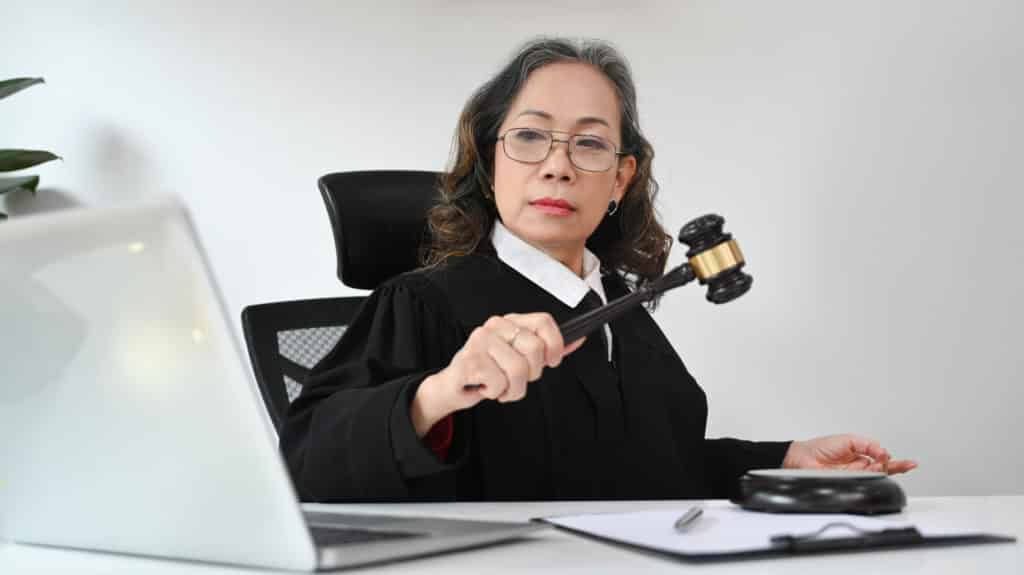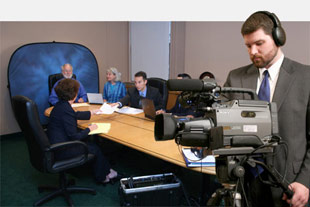How Legal Videography Improves Courtroom Discussions and Evidence
How Legal Videography Improves Courtroom Discussions and Evidence
Blog Article
Delving Into the Mechanisms of Legal Videography: Introduction Its Procedure in Safeguarding Authentic Visual Statement for Judicial Procedures
In the world of judicial proceedings, the function of lawful videography stands as a cornerstone in maintaining and offering aesthetic evidence. As modern technology proceeds to advance, the devices behind legal videography have come to be significantly intricate, supplying an essential layer of credibility to testaments recorded on video.
Historic Advancement of Lawful Videography
Examining the historic development of lawful videography reveals a considerable transformation in the catching and presentation of visual proof within the legal landscape. In the past, legal procedures greatly depended on composed transcripts and photos to document events and offer proof. With the advent of video technology, the legal market witnessed a standard change in exactly how aesthetic testament was caught and presented.
The advancement of lawful videography can be traced back to the late 20th century when improvements in video clip recording devices made it a lot more accessible for use in courtrooms. This technological development not only enhanced the accuracy and integrity of aesthetic evidence yet also changed the method situations were presented to juries and judges (Legal Videography). Attorneys started to acknowledge the convincing power of video clip recordings in conveying feelings, nuances, and non-verbal signs that composed photographs or transcripts alone could not capture effectively
Innovation Innovations in Video Clip Documentation
What vital technological advancements have revolutionized video documents in the lawful area? The lawful field has actually seen significant improvements in video documents modern technology that have enhanced the credibility and reliability of aesthetic evidence in judicial procedures.
In addition, improvements in video clip encryption and watermarking modern technologies have reinforced the safety and security and tamper-proof nature of video evidence, protecting it against unapproved changes or meddling. The development of cloud storage solutions and remote access capabilities has streamlined the storage, retrieval, and sharing of video clip evidence, promoting seamless cooperation amongst lawful experts and guaranteeing reliable accessibility to essential visual testimonies when required. These technological developments in video documents have most certainly revolutionized the lawful field, enhancing the accuracy, credibility, and admissibility of aesthetic evidence in judicial proceedings.
Function of Lawful Videographers in Courtroom Settings
The development of video clip paperwork innovation in the legal area has actually necessitated an essential duty for legal videographers in courtroom setups, guaranteeing the integrity and reliability of visual statements offered throughout judicial process. Legal videographers play a basic duty in capturing and protecting precise aesthetic evidence that can be essential in lawsuit. Their duty includes establishing up tools, videotaping procedures, and generating high-quality video clips that properly show the occasions in the court room.
In court room settings, lawful videographers need to abide by rigorous standards and standards to preserve the credibility of the visual document. They need to have an eager eye for detail and an extensive understanding of lawful procedures to make certain that the video they catch is a true representation of the top article occasions that transpired. Additionally, legal videographers often work very closely with legal teams to ensure that the video proof straightens with the instance's needs and can be properly provided in court to sustain the lawful disagreements being made. In general, the function of lawful videographers in court settings is essential in supporting the concepts of justice and making certain the openness of legal process.

Ensuring Admissibility and Integrity of Video Proof
To preserve the trustworthiness of aesthetic proof provided in legal procedures, guaranteeing the admissibility and stability of video proof is an essential obligation for legal videographers. Admissibility refers to the acceptance of evidence by the court, and for video proof to be permissible, it has to meet specific standards. Lawful videographers play an important function in guaranteeing that the videos they catch abide with the guidelines of proof, such as integrity, significance, and credibility.
Stability of video evidence entails maintaining the creativity and precision of the video from the time it is taped up until it is offered in court. This consists of safely saving the video files, documenting the chain of custodianship, and protecting against any kind of tampering or changes. Legal videographers must adhere to stringent protocols to guarantee the honesty of the video proof and stop any kind of difficulties to its authenticity.
Future Trends in Legal Videography
Offered the boosting dependence on innovation in legal procedures, legal videographers are positioned to embrace ingenious improvements shaping the future of visual testament capture and presentation. One of the prominent trends on the perspective is the assimilation of digital fact (VR) and enhanced reality (AR) technologies right into lawful videography. These technologies have the possible to reinvent exactly how visual evidence is offered in courts, allowing juries and courts to submerse themselves in the scene of the criminal activity or event.
Additionally, the use of synthetic intelligence (AI) formulas for video analysis is anticipated to enhance the process of assessing and evaluating big amounts of video footage. AI can help in recognizing key minutes, anomalies, and patterns within videos, improving the efficiency of lawful examinations.

Conclusion
In verdict, lawful videography has played a critical role in supplying genuine aesthetic evidence for judicial process. Through technical advancements and the experience of lawful videographers, the stability and admissibility of video proof are made sure in court setups. As legal videography remains to evolve, it will certainly be important to support criteria that keep the precision and integrity of visual statement for the future of legal procedures.
Taking a look go to my blog at the historic development of legal videography discloses a considerable change in the recording and presentation of aesthetic proof within the lawful landscape.The evolution of video paperwork technology in the legal field has actually necessitated a crucial role for lawful videographers in court setups, making certain the honesty and integrity of visual statements offered throughout judicial process. Furthermore, lawful videographers frequently work closely with lawful groups to guarantee that the video evidence straightens with the situation's needs and can be properly offered in court to sustain the lawful debates being made.To maintain the credibility of visual evidence offered in legal proceedings, ensuring the admissibility and integrity of video clip evidence is a vital obligation for legal videographers. As legal videography continues to develop, it will be vital to support criteria that maintain the precision and integrity of visual testimony for the future of my response legal process.
Report this page